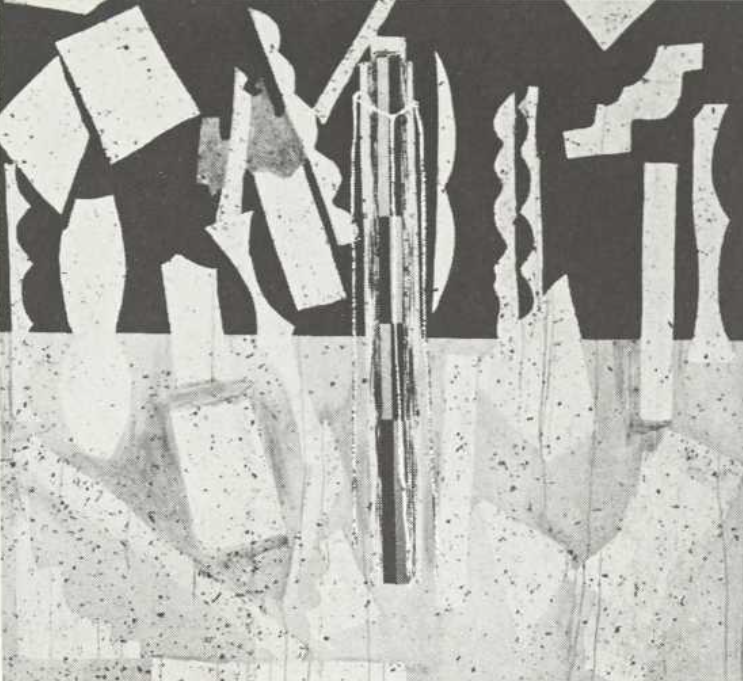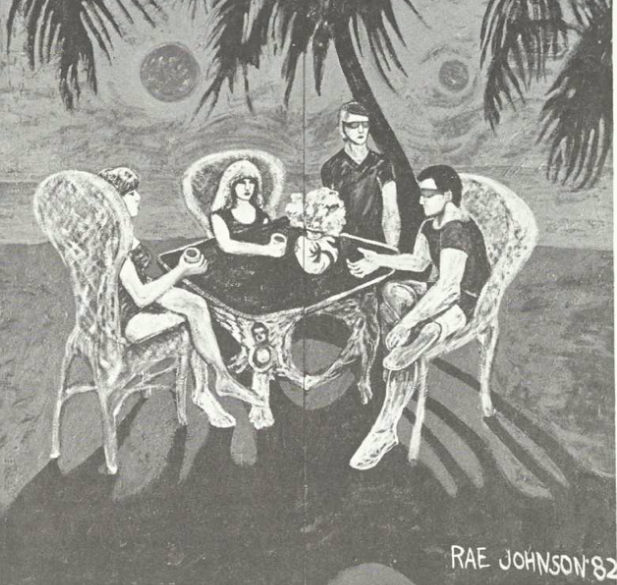David Bolduc / E(x)changes / Chromazone (1984)

Graham, Robert. (1984). David Bolduc / E(x)changes / Chromazone. Parachute, 35, pp. 35-36. Retrieved from https://numerique.banq.qc.ca/patrimoine/details/52327/3645265DAVID BOLDUC
Galerie Don Stewart and Art 45, in collaboration with Galerie Gilles Gheerbrant, Montreal
February 4-23
E(X)CHANGES
Saidye Bronfman Centre, Montreal
January 17 – February 16
CHROMAZONE
Concordia Art Gallery, Montreal
February 8 – March 3
Perhaps in an unacknowledged celebration of Toronto’s sesquicentennial, Montreal, late this winter, saw an uncommon host of contemporary Toronto painting.
Of the fifteen artists represented among these three exhibitions, none is over forty, and while their youth shows verve and energy, it also speaks of their status as the children of Expressionism, and the easy or uneasy relationship they have with that tradition, marks the manner in which they wear their heritage.
Aware of the violence I do to their individual distinctions, and ignoring some exceptions, I would like to treat the participants of these shows as being members of one or the other of two types.

The first group is constituted solely by David Bolduc, natural successor and heir to pioneer abstract Expres sionism. On the other side are the ChromaZone group and the ten artists of E(x)changes (Michael Merrill, Cathy Daley, Brian Burnett, John Scott et al.) who, to gether, represent the descendants of figurative Expressionism. This division establishes two opposing cosmologies, and illuminates an informative difference.
Ever precocious, David Bolduc appears with all the confidence, maturity, and relaxed skill of a much older master. But this is simply a first order response, lim ited to the satisfaction and resolve produced within the frames of the work. What is the significance of such strong harmony? I suggest it describes an attitude in concert with the world it perceives. Bolduc’s paintings project a benign environment, his bouquets and fruit trees evoke a munificent nature and his use of scraps of words, letters, and printed matter, as collage elements, in this instance, forms a sense of the media as a source of connection to both the distant and the past.
Bolduc’s use of the line is particularly noteworthy: he rings the changes of all its functions: lines designating borders, indicating directions and flows, forming fig ures, shapes and letters. Lines found in corrugation and raking, crosses, crescents and spirals. Lines de termining structures and frames, drawing ladders and branches.
The anthropologist Clifford Geertz has an apposite and analogous comment, on the Yoruba tribe of Nigeria:
The Yoruba associate line with civilization : “This country has become civilized,” literally means, in Yoruba, “this earth has lines upon its face.”
…[The Yoruba concern for line] grows out of a distinctive sensibility the whole of life participates in forming — one in which the meanings of things are the scars that men leave on them. 1
What is primary for Bolduc is the affirmative capacity to make a mark — as a sign of both cultural and personal presence. Making marks defines the artist as the producer of ritual-bound objects, with an integrated relationship and access to a larger community of observers.

For the others, the figuratives, the artist is portrayed as an urban exile, whose act of painting both defines the boundary of separation and provides a point where contact can be breached. Against Bolduc’s civilized and educated linearity, they posit a violent tonality — raw, garish slampainting of an anxious cityscape. Again, while the visual perception of unease is only of the first order, a function of unsettled novelty and dis orientation, it is also indicative of a more substantial condition of distance and despair. Adopting a retro- symbology, almost by rote, they have re-introduced the iconography of good and evil as active forces. The reliance on this symbology is closely related to and re capitulates the vision presented of the artist’s role in society. As another anthropologist, Mary Douglas, has written, in discussing the cosmology of witchcraft, “it takes a certain kind of social experience to start to worry about the problem of evil. Not everyone can per ceive it as a problem at all.”2 As secular demonologists, the figuratives have revitalized a forgotten ani mus. With Brian Burnett’s sinister floating eyes among the trees of the city, we have the projection of a hostile, malevolent environment. Here nature is not boun teous, but haunted.
In a Manichean rejection of external mediation, lan guage and the media, especially television, are de picted as the source of a kind of plague. It is inter esting that William Burroughs should be enjoying a bit of a revival now, when we recall his notion of words as “virus,” for the concepts of poison, pollution and plague are of particular importance to evil-fearing cosmologies. Anti-media, and often anti-intellectual, the figuratives appeal for an antidote to the unsavoury influences of established forums. Art, in its ability to render and depict, is granted the power of immediate and direct transmission, against the uncertainty and distortions of mediating agencies. While artists of this century focussed their critical attention on the institu tional context of the art activity, here the innovation is in the attempt to refute and overcome the authority of the framework by claiming direct and immediate contact.
Defined by their reception, these two artist types delin eate distinct communities and relationships to those communities; Bolduc’s cosy and cosmopolitan ac commodation and the dread and guilty frenzy of the figuratives draw quite different boundaries through and around the city they happen to cohabit.
ROBERT GRAHAM
Notes
1. Quoted in LIEBERSON, Jonathan, “Interpreting the Interpreter”; New York Review of Books, March 15, 1984, pp. 39-40.
2. DOUGLAS, Mary, Natural Symbols, (Harmondsworth: Penguin, 1978), p. 145.